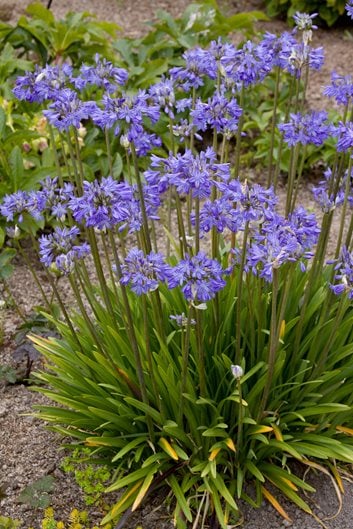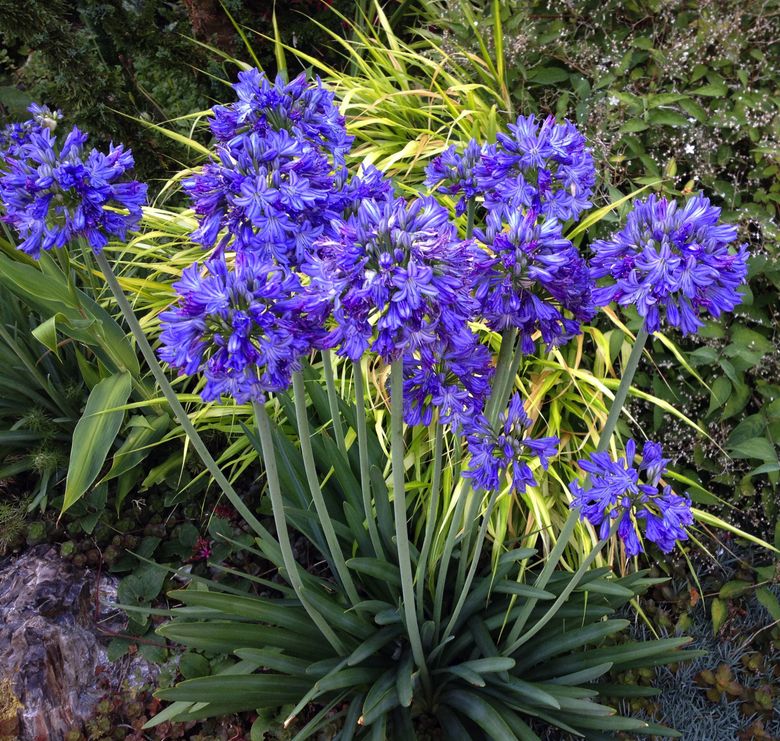Grasping the Art of Agapanthus Treatment: Important Actions for Healthy And Balanced Development and Lively Blooms
In the realm of horticulture, the cultivation of agapanthus stands as a satisfying undertaking for those that seek to nurture these elegant blooming plants. From choosing the best variety to understanding trimming methods, the trip in the direction of cultivating thriving agapanthus plants is complex and holds the vital to unlocking the full possibility of these herb gems.

Picking the Right Agapanthus Variety

When choosing the right Agapanthus selection for your garden, consider factors such as environment suitability, blossom color, and development practice. In addition, think about the environment in your region to make certain the Agapanthus variety you pick can flourish in your particular conditions. Comprehending the growth behavior of various Agapanthus ranges is essential for appropriate positioning within your yard.
Ideal Growing Conditions
Thinking about the optimum environmental needs is vital for successful Agapanthus growing. Agapanthus plants are delicate to cool temperature levels and should be shielded from frost during winter months.
To make certain healthy and balanced growth and dynamic flowers, plant Agapanthus light bulbs at a deepness of concerning 2-4 inches and area them 8-12 inches apart. Mulching around the base of the plants helps maintain dampness and reduces weed growth.
Watering and Fertilizing Tips
Maintaining correct wetness levels and offering crucial nutrients are essential aspects in the treatment regimen for Agapanthus plants. When it comes to sprinkling Agapanthus, it is essential to strike an equilibrium. These plants prefer regularly moist soil however are vulnerable to root rot if overwatered.
Fertilizing Agapanthus is vital for advertising healthy and balanced development and respected blossoms. Use a well balanced plant food, such as a 10-10-10 formula, in the very early springtime as new growth emerges. By complying with these watering and fertilizing suggestions, you can ensure your Agapanthus plants thrive and generate vivid, durable blossoms.
Trimming Methods for Agapanthus
Trimming Agapanthus plants at the proper times and with appropriate techniques is essential for preserving their health and advertising ideal development and flowering. The perfect time to prune Agapanthus is in late winter or early spring before brand-new development emerges.
For flowered stems, wait up until the flowers have perished and after that cut them back to the base. This not just cleans look these up up the plant's appearance but additionally motivates the advancement of new blossom buds. Deadheading spent flowers can additionally redirect the plant's power into generating more flowers instead of establishing seeds. Nonetheless, if you intend to accumulate seeds for propagation, leave some blossoms to dry and fully grown on the plant.
Remember to utilize tidy, sharp devices to make specific cuts and minimize the danger of presenting illness. Agapanthus. Normal pruning will certainly aid maintain your Agapanthus looking neat and healthy and balanced while ensuring an abundant display of stunning flowers
Taking Care Of Common Insects and Conditions
After ensuring appropriate trimming techniques for Agapanthus, it is important to attend to typical parasites and conditions that can influence the wellness and vigor of these plants. Agapanthus plants are generally sturdy but can still succumb certain issues. One typical pest that influences Agapanthus is the Agapanthus gall midget. This small, orange fly lays its eggs in the vegetation, resulting in altered growth and flower buds that fall short to open. To battle this insect, prune and ruin any type of affected plant parts and think about making use of insecticidal soap.
Furthermore, Agapanthus plants can this link suffer from root rot if they are planted in badly draining pipes dirt. By being cautious and taking punctual activity against insects and diseases, you can help your Agapanthus plants thrive and produce lively blooms. Agapanthus.

Verdict
In final thought, understanding the art of agapanthus treatment entails selecting the ideal variety, giving excellent growing problems, proper watering and fertilizing, suitable pruning methods, and resolving usual parasites and diseases. By adhering to hop over to these guys these vital actions, you can ensure healthy development and dynamic flowers for your agapanthus plants. Remember to consistently check and maintain your plants to advertise their total wellness and durability.
To make certain healthy development and vibrant blooms, plant Agapanthus bulbs at a deepness of about 2-4 inches and area them 8-12 inches apart. By following these watering and fertilizing ideas, you can ensure your Agapanthus plants grow and produce dynamic, long-lasting blossoms.
One common parasite that affects Agapanthus is the Agapanthus gall midget. Additionally, Agapanthus plants can endure from origin rot if they are grown in badly draining pipes dirt. By adhering to these essential steps, you can make sure healthy and balanced growth and vibrant blooms for your agapanthus plants.